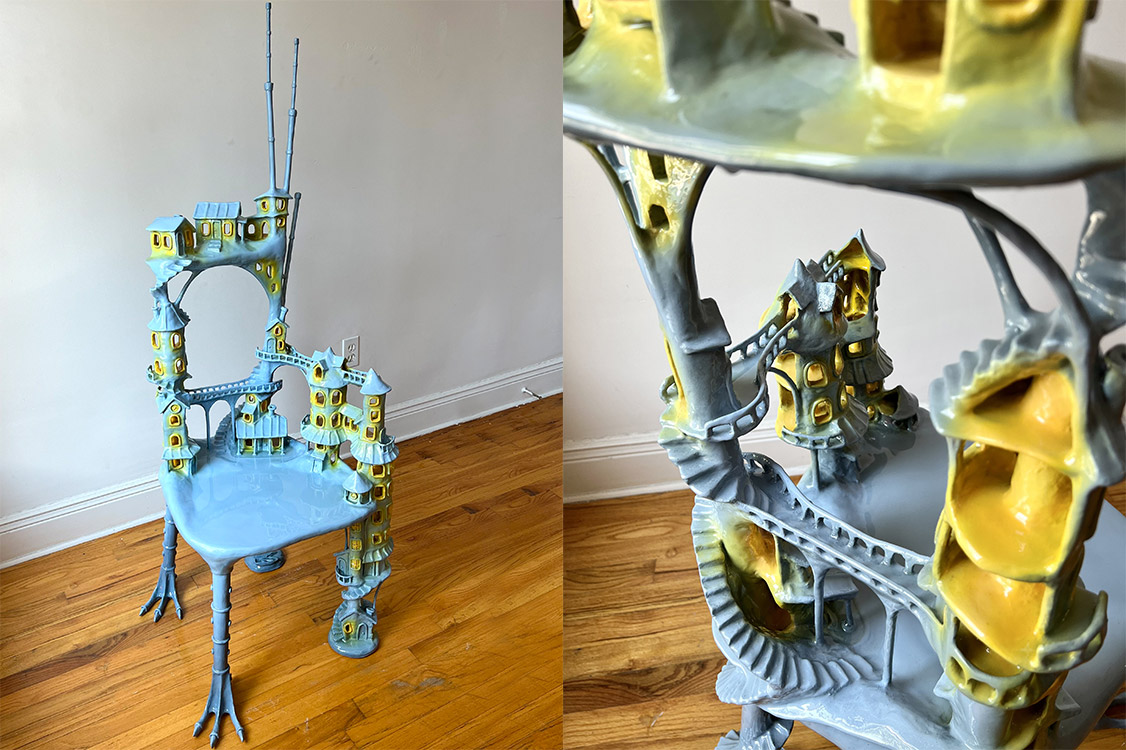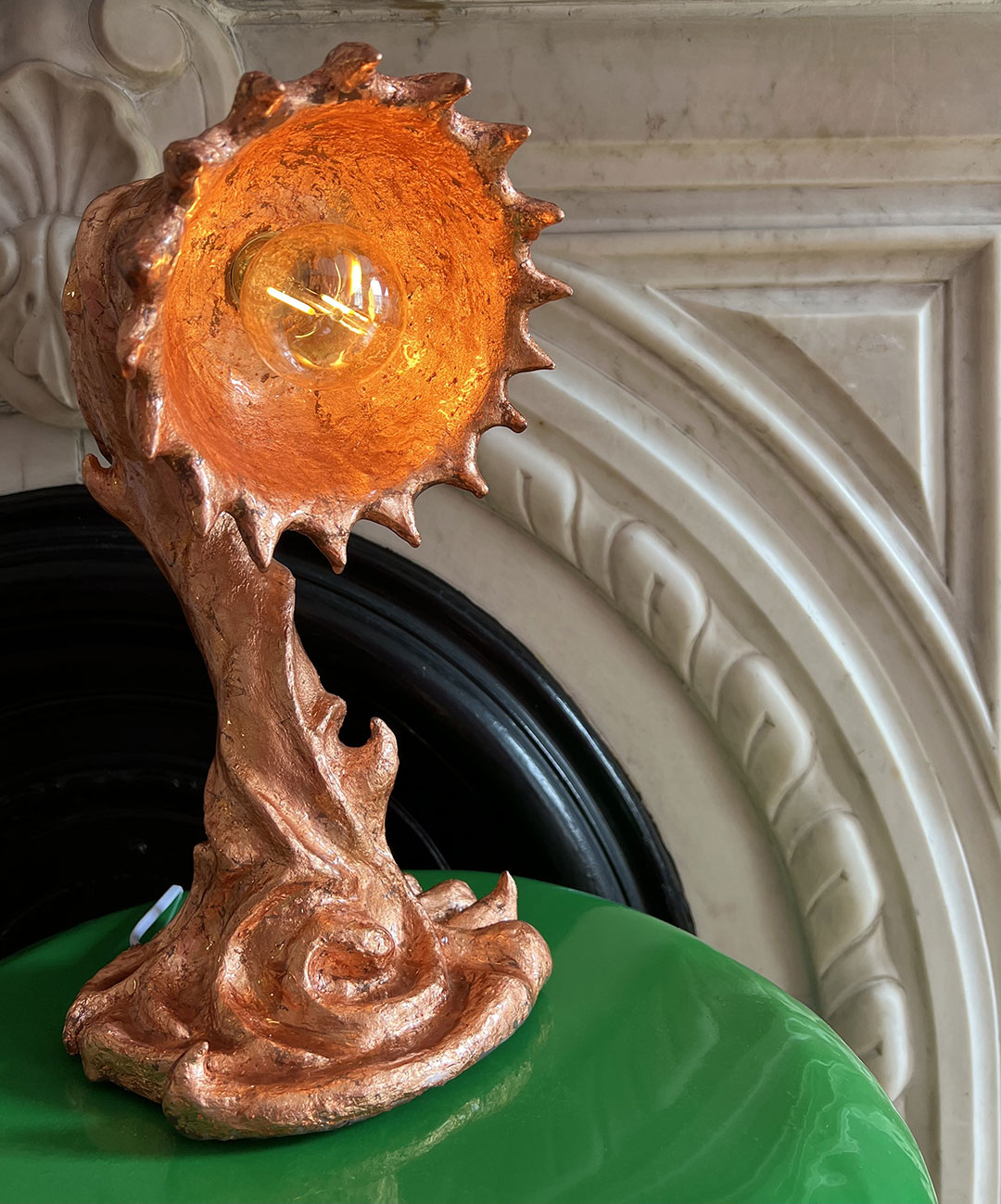For the longest time, the multilayered field of design has been governed by rigidity and the bureaucratic trope of ‘form follows function.’ Designing a functional object such as a chair, a bench or even a side table is only deemed worthy if its comfort level affirms the amount of money spent on purchasing it. Further, the simplicity of the creation was attested according to the materials used and the modernity of design. While considering functionality as a superior trait is of substance, embodying art and aesthetics in—furniture design, interior design, and architecture is also of importance.
Multiple design events and fairs such as—the Milan Design Week, Maion&Objet, Contemporary Istanbul, 3daysofdesign, and the Collectible Design Fair, are gaining popularity as global platforms to display creative works, with many young designers emerging as pioneers of sculptural furniture designing. Creative trendsetting artists and product designers such as— Chris Schanck, Rogan Gregory, Casey McCafferty, Katie Stout, Kiki Goti and Stanislaw Trzebinski among others, are challenging the norms of furniture design, giving ordinary objects an upgrade with sculptural shapes and vivid shades, while adhering to their functional idiosyncrasies.
One such sculptor and product designer is Brooklyn-based Nicholas Devlin. Holding a degree in architecture and a flourishing career in product design, Devlin often breaks creative barriers with his intricately detailed, colourful, highly structural, form-defying objects that seem to have emerged straight out of a fable. His work explores abstract forms that blur the boundaries between architecture, design, and art while acknowledging the complexities of everyday life. The designer takes pride in contravening innovational norms to sculpt stories for furniture pieces.
STIR shifts the spotlight on some of Devlin’s sculptural accomplishments and their accompanying narratives including a chair shaped like a fairy tale castle, a gunky green slime mirror, an armchair in distorted plastic bag upholstery, a side table with two heads and a lamp that looks like a fictitious Demogorgon.
The hometown chair
“Very recently in a neighbourhood near you... there was once a chair on which you could hardly sit. It had not to care what you wanted, desired, or expected of it. It was not concerned with comfort or function, it did not care about the cliche of technology and art or their junction. It was meant to tell a story that was sort of funny and free. It wanted to play with your mind and help you dream of what could be! Why couldn't a chair transport you here or there? Who is to say if it doesn't go with a room, or make sense in a space? What does it matter if it can take you to another time or place?”
The Hometown chair by Nicholas Devlin is designed as a castle from a fictitious faraway land mounted on the monstrous Sea Drake’s webbed feet. The uncanny outlook of the blue and yellow coloured chair is a head-turner with its miniature watch towers, conical roofs, cascading staircases, connecting bridges, arches, and tiny huts. It appears as though Devlin has presented an entire town in a multilevel setting, incorporating diverse historic architectural elements in a sculptural chair design. The result is an object which may or may not offer the best comfort, but will surely highlight the artistic side of a modern interior setting.
‘A house is not a home’ chair
“A house is not a home and neither is this chair.
I guess I'll keep on looking, it must be here somewhere!”
Contrasting the heavily ornamented Hometown chair, Devlin’s ‘A house is not a home’ chair is rather simplistic and unadorned. The lavender-coloured chair evokes a sense of domestic comfort and drives the idea of homecoming. The form remains uncomplicated but envisions a platform leading up to the entrance of a gable-roofed hut, designed as the chair’s backrest. The American designer tries to entail a sense of rootedness and belonging that people often search for, as they move from one place to another, offering an object that is a reminder of a cosy home. “The image of home in a chair might act as a salve for homesickness or provide us with some lighthearted insight about our yearning for a home,” says Devlin.
The poorly upholstered throne
Devlin also tries to capture the essence and feeling of authority, dominion, ownership and control with his armchair titled the poorly upholstered throne as a sardonic symbolisation of a royal throne. Focusing on the idea of leadership that a throne embodies, Devlin crafted the armchair to look exceptionally detailed but with a formidable form, channelling attention onto the shape of the throne. The bulky black armchair with a five-fingered crown is a whimsical disposition of the notion that every individual’s house is their castle, one that they continue to rule over.
‘I see you’ table lamp
The experimental table lamp takes the shape of an alien artefact with a spherical bulb appearing from the centre. Devlin created the lamp in a pink tone with peach undertones and a sinuously curved shape, reimagining a squirming extraterrestrial object. “I wanted to develop more detailed forms and combine a romantic sort of alien fairy tale. What might a historic artefact look like from another planet?” shares Devlin. Additionally, Devlin also designed a different version of the alien-like table lamp that is relatively smaller in size and holds a different shape.
Two-headed side table lamp
With the sculptural two-headed lamp, Devlin tried to anthropomorphize the historic vibe of New York, United States and its green globular subway lamps. As a resident of Brooklyn, Devlin aimed at incentivizing the infrastructural non-colour which can be seen on scaffoldings, trash cans, and even subway lamps. The side table shape shifts as a sculptural lamp and is the perfect artistic touch for a contemporary interior.






 Sign in with email
Sign in with email
















What do you think?